#HVAC performance
Explore tagged Tumblr posts
Text
In today’s connected world, smart thermostats have emerged as a modern solution to managing home temperatures efficiently. These devices go beyond traditional thermostats, offering advanced features like remote control, energy usage tracking, and integration with other smart home systems. More Info: https://smartthermostathub.blogspot.com/2024/12/Smart%20Thermostat.html
0 notes
Text
Ensure Efficiency with Expert Air Duct Replacement

Worn-out air ducts can lead to poor air quality and higher energy bills. Reliant Air Duct Cleaning Oak Park specializes in professional air duct replacement to restore your home's airflow and efficiency. Our skilled technicians use advanced methods to replace damaged ductwork, ensuring a healthier environment and better HVAC performance. Don’t let faulty ducts compromise your comfort—trust Reliant Air Duct Cleaning Oak Park for reliable air duct replacement services tailored to your needs. Contact us today!
Reliant Air Duct Cleaning Oak Park Oak Park, IL (708) 556-2209 www.reliantairductcleaningoakpark.com
#air duct replacement#professional duct replacement#HVAC performance#improved air quality#Reliant Air Duct Cleaning Oak Park#ductwork services#energy efficiency#home comfort solutions
0 notes
Text
The Benefits of Using Professional Duct Specialists for Leak Repairs
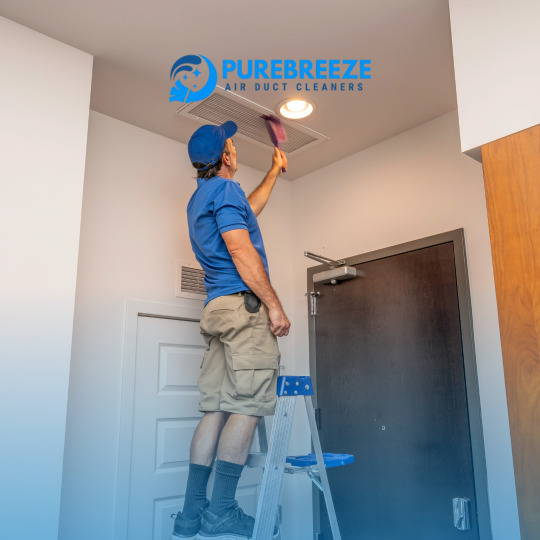
Your home’s air ducts are essential for maintaining a comfortable and energy-efficient environment. Over time, these ducts can develop leaks or cracks, leading to poor air distribution, increased energy bills, and compromised indoor air quality. Relying on professional duct specialists for air duct repair ensures these issues are resolved effectively, keeping your HVAC system in optimal condition.
Why Air Duct Repair Matters
Air duct leaks can significantly impact your home’s comfort and energy efficiency. These leaks allow conditioned air to escape, forcing your HVAC system to work harder. This not only increases energy consumption but also leads to uneven temperatures in different areas of your home. Professional air duct repair addresses these problems, improving system performance and enhancing comfort.
Expertise in Identifying and Sealing Duct Leaks
Professional duct specialists have the tools and expertise to locate leaks that are often hidden from view. Using advanced diagnostic equipment, they can identify areas where air is escaping and seal them effectively. This ensures your ducts are working efficiently, preventing further strain on your HVAC system.
Improved Energy Efficiency
One of the main benefits of air duct repair is enhanced energy efficiency. Leaky ducts force your HVAC system to run longer to maintain the desired temperature, resulting in higher energy bills. Sealing these leaks reduces air loss, which helps your system operate more efficiently and lowers your utility costs.
Better Indoor Air Quality
Leaky ducts can introduce dust, allergens, and pollutants into your home’s air supply, negatively affecting indoor air quality. This can be particularly problematic for individuals with allergies or respiratory conditions. By sealing these leaks, professional air duct repair services help keep contaminants out, ensuring a healthier living environment.
Extending the Lifespan of Your HVAC System
Timely air duct repair reduces the strain on your HVAC system. When your ducts are functioning properly, your system doesn’t have to work as hard to distribute air. This minimizes wear and tear, helping to extend the lifespan of your HVAC unit and reducing the likelihood of expensive repairs or replacements in the future.
Take Advantage of Professional Air Duct Repair
Investing in professional air duct repair is a smart decision for maintaining a comfortable, energy-efficient, and healthy home. By addressing duct leaks promptly, you can improve your HVAC system’s performance, lower energy costs, and enjoy better indoor air quality. Contact a trusted duct specialist today to schedule an inspection and experience the benefits of expert leak repairs.
#Air Duct Repair#Professional Air Duct Repair#Residential Air Duct Repair#Commercial Air Duct Repair#HVAC Duct Repair#Duct Leak Repair#Duct Sealing#Air Duct Maintenance#Airflow Optimization#Indoor Air Quality Improvement#Energy Efficiency#HVAC System Repair#Ductwork Repair Services#Leaky Duct Solutions#Air Duct Inspection#Air Duct Replacement#HVAC Performance#Air Duct Cleaning and Repair#Cost-Effective Duct Repair#Duct Damage Repair#Air Duct Repair Specialists#Air Duct Repair Services Near Me#Home Energy Savings#Air Duct Leak Detection#Improved Air Circulation.
0 notes
Text
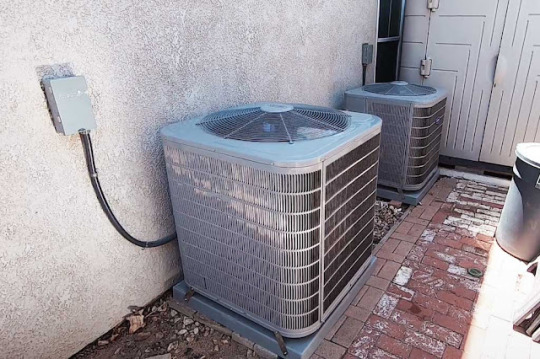
The Heating, Ventilation, and Air Conditioning (HVAC) system manages the heating and cooling of buildings and accounts for a significant portion of a household's energy usage.
1 note
·
View note
Text
How Ductwork Impacts Your AC Installation Efficiency?
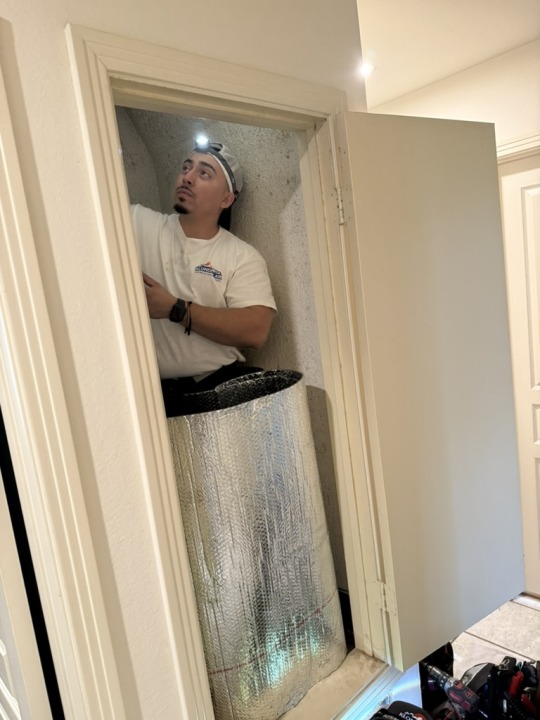
Summary:
This article explains how ductwork directly impacts the efficiency, performance, and lifespan of your AC system. It covers the different types of ducts (flexible, sheet metal, fiberglass-lined, and fiberboard), highlighting their pros, cons, and ideal use cases. Key factors, such as airflow, proper sizing, sealing, and insulation, are discussed as essential to achieving energy efficiency and maintaining indoor comfort. The article also emphasizes the importance of professional installation, regular maintenance, and code compliance.
Introduction
When it comes to air conditioning systems, there is a direct connection between ductwork and HVAC performance. Most homeowners only focus on the unit, its brand, and features, but one of the most overlooked components that affects the installation and performance of your system is the design of your AC ductwork.
Proper ductwork design ensures that cool air flows efficiently throughout your home. Poorly designed ductwork can lead to uneven cooling, increased energy cost, and a shorter lifespan for your system.
At Klondike Air, we offer efficient ductwork AC installation to enhance the performance of your system. Our experts will also break down how ductwork influences the cooling performance of your air conditioner and why it matters in residential and commercial settings.
Types of Ducts in Residential and Commercial AC Installations
If you are looking to replace or install new ductwork in your Orange County building, you should carefully consider the type of AC ductwork you want to use.
The type of ductwork and how they are installed significantly affect performance, energy efficiency, and indoor comfort. One of the main factors affecting AC ductwork and HVAC performance is the purpose of your building.
Both residential and commercial applications utilize a range of duct types, tailored to their specific size, complexity, and environmental conditions.
The four main types of ductwork commonly used in HVAC systems are:
Flexible Ductwork
This type of ductwork is made from a metal wire coil and is covered with a layer of flexible plastic. These ducts are designed to be flexible and can be bent or shaped to fit into tight spaces or around obstacles. This makes them ideal for use in tight areas such as attics or crawl spaces.
Flexible ducts are easy to install and come with built-in insulation, typically made of glass wool or plastic materials such as polyethylene. They’re an excellent choice for tight spaces, such as attics or crawl spaces. A significant drawback of flexible ductwork is that it can be easily crushed and kinked, resulting in airflow restrictions. Also, they are susceptible to tears, leaks, and degradation over time.
Sheet Metal Ducts
Sheet metal ducts are the most common type of duct in the US. They are suitable for both residential and commercial applications. These ducts are usually made with galvanized steel or aluminium for their lightweight and easy installation. The best part of installing sheet metal ducts is that they are resistant to mold and bacterial growth. They are also durable, and their smooth surfaces reduce friction, improving airflow.
A significant drawback of sheet metal ducts is that they are expensive and labor-intensive to install. The other drawback is that they are poor insulators. If you have metal sheet ductwork in an unconditioned area, such as an attic or crawl space, the outside of the ducts needs to be wrapped with insulation to prevent heat transfer.
Fiberglass Lined Ducts
Fiberglass-lined ducts are very similar to sheet metal ducts; the only difference is that they have internal and external fiberglass lining. These ducts are preferred for commercial AC installations as they can help dampen the sound of your air conditioner.
This type of duct is not typically recommended due to its high installation cost. The biggest problem, however, is that it tends to trap lots of dust, allergens, and bacteria. Therefore, it will need to be cleaned more frequently; additionally, this type of duct is difficult to clean, which increases maintenance costs.
Additionally, fiberglass-lined ducts do not last long, and if they are not replaced promptly, they will begin to deteriorate, releasing fiberglass particles into the air. This is a significant health concern, as exposure to fiberglass can irritate the eyes, skin, throat, and lungs. Prolonged exposure to deteriorating fiberglass may pose health risks, including respiratory irritation.
Fiberboard Ducts
Fiberboard duct is made of compressed and resin-bonded fiberglass. The outside of the duct is laminated with a foil sheet, which protects it from moisture and acts as an air barrier for better insulation. The inside of the duct also features a special coating that fully seals the fiberboard, preventing fiberglass particles from escaping.
Fiberboard ducts are better insulated and have acoustic properties, making them perfect for commercial and industrial applications. Compared to sheet metal and fiberglass-lined ducts, these ducts are less expensive and easier to install.
However, a significant drawback is that they trap more dust and debris, which impacts indoor air quality. They are also challenging to clean and have rough interiors, which creates airflow resistance and highlights the relationship between AC ductwork and HVAC performance.
The Science Behind Airflow and Efficiency
Airflow affects everything from how quickly your house cools down to how fresh the air feels. When air is distributed evenly, your HVAC system doesn’t have to work as hard, which can extend its lifespan and save you money on repairs. The science behind airflow and efficiency lies in the relationship between air pressure, duct design, and system performance.
Static Air Pressure and Velocity
Air must move at the right speed and volume through ductwork to effectively cool your space. A narrow or dirty duct will create resistance, forcing your system to work harder. This reduces the efficiency of your system and the lifespan of your unit.
Air Leaks and Energy Loss
Leaky ducts are the most common reason behind the loss of efficiency. Conditioned air that escapes through the gaps puts a strain on your system, forcing it to work harder than necessary and increasing energy loss.
Air Return and Pressure Balance
Energy-efficient AC systems maintain a balance between the supply and return airflows, ensuring optimal performance. If the return air path is restricted, it can create negative pressure, drawing unconditioned air from outside, attics, and garages.
Installation Quality and Its Impact
The following are the ways ductwork AC installation can affect cooling performance and efficiency:
Proper Sizing for Efficiency
Ductwork installation must be sized to match the capacity of your system. Undersized ducts will reduce airflow and strain your system, while oversized ducts can reduce air velocity, resulting in poor air circulation and uneven cooling.
Sealing and Insulation
Poor sealing and insulation can result in a 20-30% decrease in cooling efficiency. When your air ducts are not properly sealed, it allows conditioned air to escape before it reaches your house. This leads to energy loss, forcing your system to work harder to compensate for the loss.
Balancing the System
A quality installation ensures that each room receives the correct volume of conditioned air. This helps enhance energy efficiency and ensures that no room gets too hot or too cold.
The Value of Trusted AC Installation
Working with a reputable HVAC installer in Orange County brings long-term benefits, including:
Accurate Load Calculations
One of the first steps a trusted installer takes for AC installation is performing a Manual J load calculation. This enhances ductwork and HVAC performance, ensuring proper air circulation and energy efficiency.
Code Compliance
Trusted HVAC professionals adhere to local, state, and national building codes, which are designed to protect homeowners and maintain energy standards. For example, in Orange County, California, Title 24 compliance is mandatory for AC and ductwork installation. The title ensures that systems are designed, installed, and tested to meet or exceed modern energy efficiency and safety standards.
Testing and Balancing
This ensures that your HVAC system and its ductwork deliver the right amount of airflow to every room in your home. It ensures optimal comfort, energy efficiency, and noise reduction, while also extending the lifespan of your air conditioner.
Duct Condition and Its Role in Long-Term Efficiency
l̥ṁ,The condition of your air ducts directly impacts the long-term efficiency of your HVAC system. Properly maintained ducts ensure optimal airflow, prevent energy loss, and contribute to better indoor air quality. Neglecting air duct maintenance can lead to decreased efficiency, increased operating costs, and potential health issues.
Energy Efficiency: Poorly insulated or damaged ducts can allow conditioned air to escape, forcing your system to work harder and resulting in higher energy consumption and utility bills.
Indoor Air Quality: Your ducts can accumulate dust, dirt, and allergens, all of which can block the air paths and be circulated throughout your building. Some of these particles can lead to serious health challenges, including asthma and cancer.
System Longevity: Regular duct maintenance can help you identify and address potential problems before they worsen, thereby extending the lifespan of your air conditioner. Minor issues such as leaks, blockages, or mold growth, if not promptly treated, can lead to system failure.
Cost Savings: A well-maintained duct system improves energy efficiency, resulting in lower utility bills and reduced repair needs.
Contact Us for AC Solutions
Pros and Cons of Ductwork and Ductless AC Installation
When choosing between a traditional ducted and a ductless system, it is advisable to weigh the pros and cons before making a decision. Here is how both duct systems compare to each other:
Installation Cost: In homes with existing ductwork, the cost of adding or replacing AC units is considerably lower. At the same time, ductless systems have a higher upfront cost.
Energy Efficiency: Ducted systems have good energy efficiency as long as they are well-maintained. But ductless systems are excellent, energy-efficient AC systems.
Maintenance: Ducted systems have comprehensive, frequently expensive, and complicated maintenance needs. Meanwhile, ductless systems only require a simple filter change.
Air Quality: Ducted systems can be infested with dust, mold, bacteria, and other contaminants, compromising indoor air quality. Meanwhile, ductless systems have cleaner and safer air.
Conclusion
When considering AC installation, ensure that your ductwork is sized correctly for your system and meets your specific needs. Most homeowners overlook the connection between AC ductwork and HVAC performance, which can lead to poor cooling, high utility bills, and a shortened system lifespan.
It is essential to note that while minor flaws can be easily corrected, a major ductwork issue may necessitate extensive or costly changes. Contact us for quality AC installation in Orange County now!
This blog was originally published at https://klondikeair.com/how-ductwork-impacts-ac-installation-efficiency/
0 notes
Text
Optimizing Furnace Airflow: Why the Right Blower Wheel Matters for Industrial Efficiency
In industrial heating systems, airflow is everything. Poor airflow in your furnace setup can result in uneven heat distribution, increased energy costs, and premature equipment failure. If you're an industrial facility manager or HVAC technician in the U.S., you already know how vital it is to keep systems running at peak efficiency.
One of the most overlooked components in this equation is the furnace blower wheel — the very part responsible for circulating air efficiently throughout your system.
Let’s explore how choosing the best blower wheel for your furnace can dramatically optimize furnace airflow, improve system performance, and reduce operating costs — especially when you choose Central Blower’s expertly engineered solutions.
🔍 Understanding Furnace Blower Wheels
The blower wheel is a type of centrifugal fan that draws air through the furnace and pushes it into the ductwork. It’s what moves heated air throughout your industrial space.
But not all blower wheels are created equal. Key factors like blade shape, material quality, and balance precision directly affect furnace blower performance.
💨 Why Airflow Optimization Matters
When furnace airflow isn’t optimized, it causes:
Inconsistent heating across zones
Overworked motors, shortening their lifespan
Higher energy bills due to inefficiencies
Poor indoor air quality from stagnation or airflow dead zones
This can cost your business thousands annually in energy, maintenance, and downtime.
🛠️ Central Blower’s Advantage: Precision-Engineered Blower Wheels
At Central Blower, our furnace blower wheels are specifically designed to maximize airflow efficiency. These high-performance components are tested for:
Aerodynamic blade configuration
High static pressure resistance
Durability in high-temperature environments
Corrosion-resistant materials for longevity
Each wheel is crafted to enhance furnace blower performance and deliver optimal airflow, especially in demanding industrial environments.
✅ Pro Tip: For facilities operating 24/7, upgrading to a precision-balanced blower wheel can improve energy efficiency by up to 15%.
🔍 Primary Factors When Choosing the Best Blower Wheel for Furnace Systems
Here’s what industrial buyers should consider:
Wheel Size & Fit: Compatibility with furnace housing
Material Type: Aluminum, steel, or composite depending on temperature and exposure
Blade Type: Forward curved, backward inclined, or radial for different flow demands
RPM & Airflow Ratings: Ensure specs meet system requirements
Need help matching specs? Explore Central Blower's furnace blower wheel selection for a full guide.
📊 Case Snapshot: Industrial Facility in Ohio Upgrades to Central Blower Wheel
A food processing plant in Ohio upgraded their aging furnace blower wheel to Central Blower's backward-inclined model. The result?
20% reduction in energy consumption
Even temperature distribution across all processing zones
Maintenance intervals extended by 6 months
This is a classic example of how a simple component swap can lead to substantial operational gains.
❓ Q&A: What Industrial Owners Ask About Furnace Blower Wheels
Q: How often should a furnace blower wheel be replaced? A: For high-demand industrial systems, it’s best to inspect annually and replace every 3–5 years, depending on wear and airflow drop.
Q: Can the wrong blower wheel cause system overheating? A: Yes. Insufficient airflow can trap heat, causing your furnace to overheat and even trip safety shutdowns.
Q: Is custom sizing available from Central Blower? A: Absolutely. Central Blower offers customized solutions to meet the needs of specialty applications or retrofitted systems.
🔁 Incorporating Long-Tail and LSI Keywords Naturally
If you're aiming to optimize furnace airflow in industrial HVAC systems, upgrading the blower wheel should be your first move.
Looking for a replacement blower wheel for your industrial furnace? Central Blower’s catalog offers reliable solutions.
The best blower wheel for furnace performance isn't a generic option — it's a precision-fit, balanced, and durable part.
✅ Key Takeaways
Furnace airflow is crucial to system efficiency and heat distribution.
The furnace blower wheel plays a direct role in airflow quality.
Central Blower offers precision-engineered blower wheels ideal for industrial systems.
Upgrading can reduce energy use, extend equipment life, and improve heating consistency.
📞 Call to Action
Ready to optimize your furnace airflow with the right blower wheel? 👉 Browse Central Blower’s furnace blower wheel selection now or contact our technical team for personalized guidance.
#optimize furnace airflow#best blower wheel for furnace#furnace blower performance#replacement blower wheel for your industrial furnace#optimize furnace airflow in industrial HVAC systems#airflow efficiency#blower fan blade#industrial heating systems
0 notes
Text
Why an Estimating Service Is Critical for Net-Zero Energy Building Projects
Introduction Net-zero energy (NZE) buildings are designed to produce as much energy as they consume, but their advanced systems and materials come with unique budgeting challenges. An estimating service is critical in aligning high-performance design goals with realistic cost planning and funding strategies.
Energy Modeling and Cost Translation Net-zero projects rely on energy models to inform design decisions. Estimators interpret these models and translate them into actionable cost plans. From high-efficiency HVAC systems to renewable energy sources, each element is costed against its performance return.
High-Performance Envelope Estimation A building envelope with airtight insulation and triple-glazed windows can be expensive. Estimating services quantify these upfront costs while comparing them to long-term energy savings, offering a full view of return on investment.
Renewable Integration Solar panels, geothermal loops, and battery storage are core to NZE buildings. An estimating service includes these costs while factoring in rebates, tax incentives, and net metering opportunities that reduce net expense.
Cost of Certification Many NZE projects pursue third-party certifications like LEED Zero or Passive House. Estimators include costs for documentation, modeling, commissioning, and verification processes that often go unaccounted for in standard estimates.
Sensitivity to Climate and Region Cost planning varies based on regional weather patterns, solar exposure, and utility rates. Estimating services localize costs, ensuring that regional variations in materials, labor, and climate performance are properly considered.
Payback Analysis Support Clients often seek to understand when their investment will pay off. Estimating services prepare lifecycle cost analyses and energy payback timelines, helping investors and developers assess the financial feasibility of NZE adoption.
Conclusion Net-zero projects demand a specialized estimating approach. An experienced estimating service not only calculates costs but contextualizes them within sustainability goals and financial realities, making these ambitious projects more accessible and achievable.
#estimating service#net-zero energy#NZE building#energy modeling#renewable energy#cost estimating#passive house#solar integration#geothermal systems#high-performance building#airtight envelope#cost savings#sustainability cost#net-zero cost#triple glazing#payback timeline#LEED Zero#energy incentives#green certification#smart HVAC#battery storage#insulation cost#net metering#energy-efficient design#long-term ROI#lifecycle costs#energy performance#green budgeting#climate-based cost#efficient building systems
0 notes
Text
BIM Software Solutions for Modern HVAC Applications
As the HVAC industry continues to evolve in 2025, Building Information Modeling (BIM) has become an indispensable tool for professionals seeking to optimize design, installation, and maintenance processes. For HVAC engineers, contractors, and technicians, selecting the right BIM software can significantly impact project efficiency and outcomes. Let’s explore the most effective BIM solutions for…
#3D modeling#augmented reality#Autodesk Revit#automation#Bentley AECOsim#BIM#BIM workflows#building information modeling#Building performance#building systems#clash detection#cloud collaboration#cooling loads#decision matrix#digital twin#duct design#energy analysis#Energy efficiency#fabrication documentation#Graphisoft ArchiCAD#heating loads#hvac#HVAC design software#HVAC engineering#interoperability#mechanical engineering#mechanical systems#MEP#MEP coordination#mixed reality
0 notes
Text
Air Washer Unit Maintenance Tips for Optimal Performance
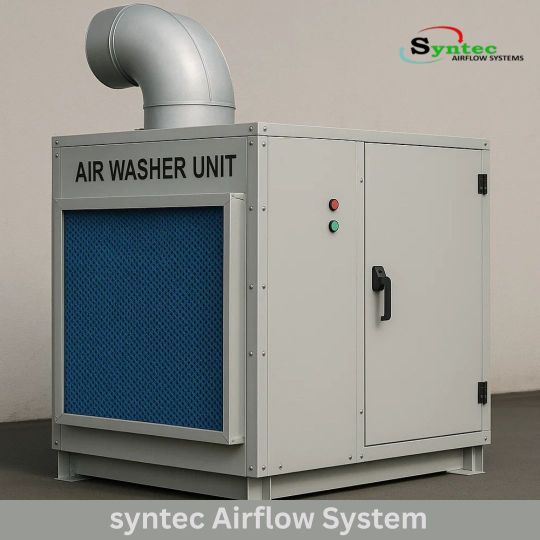
Proper maintenance is key to ensuring long-term efficiency and performance. An Air Washer Unit requires routine care, including cleaning filters, checking water circulation, and inspecting fan motors to avoid operational issues. Regular upkeep not only enhances cooling and air purification but also extends the unit’s lifespan and reduces energy costs. Following a scheduled maintenance plan helps keep your system running smoothly and efficiently.
#Proper maintenance is key to ensuring long-term efficiency and performance. An Air Washer Unit requires routine care#including cleaning filters#checking water circulation#and inspecting fan motors to avoid operational issues. Regular upkeep not only enhances cooling and air purification but also extends the u#air flow equipments#ahu manufacturers in india#custom air handling unit manufacturers#air washer unit#hvac in india#ahu components
0 notes
Text
HVAC Preventative Maintenance in Raleigh – Keep Your System Running Smoothly
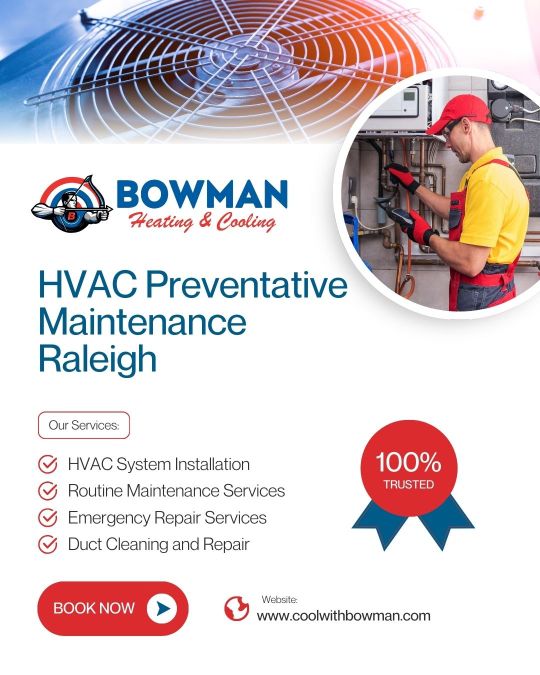
Extend the life of your HVAC system with expert preventative maintenance in Raleigh by Bowman Mechanical Services. Our routine HVAC check-ups ensure your heating and cooling systems run efficiently all year long. Avoid costly repairs, improve air quality, and reduce energy bills with regular maintenance. Trust our certified technicians to keep your HVAC system in peak condition. Schedule your service today
Visit : https://coolwithbowman.com
#Technician performing HVAC preventative maintenance on an outdoor unit in Raleigh#NC#Bowman Mechanical#HVAC maintenance#heating and cooling checkup#AC maintenance Raleigh#routine HVAC care#HVAC tune-up Raleigh
0 notes
Text
KRN HVAC Secures Indian Railways Vendor Approval, Unlocking New Growth Opportunities
KRN Heat Exchanger and Refrigeration Limited (KRN HVAC) has achieved a major milestone with its wholly owned subsidiary, KRN HVAC Products Private Limited, receiving Approved Vendor status from the Ministry of Railways, Government of India. This approval, granted after a capacity and capability assessment, allows the company to supply Oil Cooler Radiators for Converter Transformers to Indian…
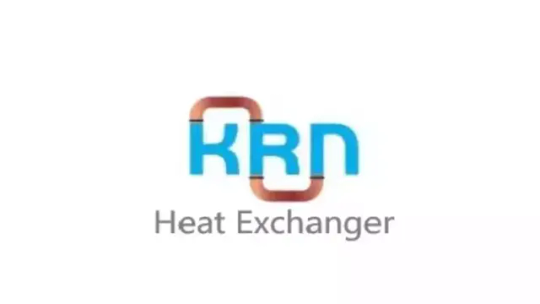
View On WordPress
#breaking news#breaking news live#company results#concall#fundamental#fundamental analysis#fundamentals#future#future guidance#future outlook#KRN Heat#KRN Heat Business Update#KRN Heat Latest#KRN Heat Latest News#KRN Heat Latest Update#KRN Heat News#KRN Heat News Today#KRN Heat Share#KRN Heat Stock#KRN HVAC#KRN HVAC Breaking News#KRN HVAC Business Update#KRN HVAC Financial Performance#KRN HVAC Fundamental Analysis#KRN HVAC Future Outlook#KRN HVAC Investment Opportunity#KRN HVAC Latest News#KRN HVAC News#KRN HVAC News Today#KRN HVAC Quarterly Results
0 notes
Text
How To Improve Your HVAC System’s Performance ?
0 notes
Text
How Humidity Affects Your Air Conditioning in Hot Springs, AR (And What You Can Do About It)
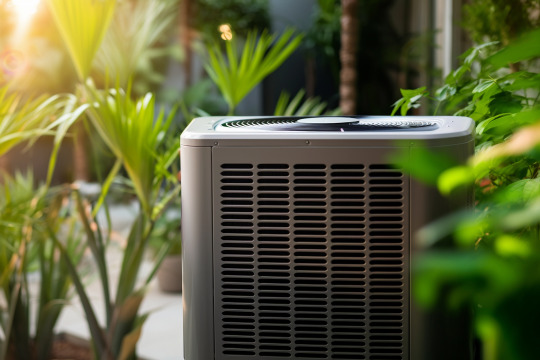
Hot Springs, AR experiences high humidity levels, which can make your home feel hotter than it actually is. Excess humidity can also strain your air conditioning system, leading to higher energy bills and reduced cooling efficiency. In this article, we’ll explore how humidity impacts your AC and what you can do to improve your home’s comfort.
How Humidity Affects Your AC System
1. Increased Energy Usage
High humidity forces your AC to work harder to remove moisture from the air, increasing energy consumption and utility costs.
2. Reduced Comfort Levels
Even if your thermostat is set at a comfortable temperature, excess moisture in the air can make it feel warmer and stuffier.
3. AC System Wear & Tear
Constant operation due to humidity can cause faster wear on your AC’s components, leading to more frequent AC repair and a shorter lifespan.
Solutions to Combat Humidity & Improve AC Performance
Use a Whole-Home Dehumidifier: This helps reduce excess moisture, allowing your AC to run more efficiently.
Adjust Thermostat Settings: Setting your thermostat to 78°F with moderate humidity levels can maintain comfort without overworking your AC.
Improve Ventilation: Ensuring proper airflow and using ceiling fans can help circulate air and maintain comfort.
Schedule Regular HVAC Maintenance: Having your AC system checked and cleaned ensures it operates efficiently even during humid months.
Conclusion
Managing humidity levels improves both your comfort and your AC system’s efficiency. If you’re struggling with humidity-related AC issues in Hot Springs, AR, Prime Air Care can help with expert solutions.
#air conditioning hot springs ar#humidity and AC performance#AC repair Hot Springs#high humidity cooling solutions#hvac maintenance
0 notes
Text
How Proper Airflow Helps Prevent Frozen Evaporator Coils and Costly Repairs

One of the most common issues homeowners face with their air conditioning system is a frozen evaporator coil. This problem can lead to reduced cooling efficiency, increased energy costs, and even system failure if not addressed in time. Proper airflow plays a critical role in preventing coil freezing and ensuring your air conditioning system operates efficiently. Understanding how airflow impacts your AC unit and knowing the best air conditioning repair strategies can help you avoid costly repairs and maintain optimal performance.
The Role of Airflow in Preventing Evaporator Coil Freezing
Airflow is essential for maintaining the right temperature and moisture balance in your air conditioning system. When airflow is restricted, the evaporator coil cannot absorb enough heat, causing condensation to freeze and leading to ice buildup. Several factors contribute to airflow issues, including:
Clogged Air Filters: A dirty air filter blocks airflow, making it harder for warm air to reach the evaporator coil.
Blocked Vents and Registers: Furniture or other obstructions covering vents can disrupt circulation, leading to uneven cooling and frozen coils.
Ductwork Issues: Leaks, blockages, or poorly designed ducts can limit airflow, reducing the system’s efficiency.
Malfunctioning Blower Fan: If the blower fan isn’t working correctly, it won’t push enough air over the coil to prevent freezing.
Improperly Sized AC Unit: An oversized or undersized air conditioning system can lead to short cycling or inadequate dehumidification, both of which contribute to coil freezing.
Signs That Poor Airflow Is Causing Your Evaporator Coil to Freeze
Recognizing the symptoms of inadequate airflow can help you take quick action to prevent a frozen coil. Some common signs include:
Weak airflow from vents
Ice forming on the evaporator coil or refrigerant lines
Water leaks from the indoor unit due to melting ice
Warm air blowing from the AC despite the system running
Unusual noises coming from the blower or ducts
If you notice any of these issues, an air conditioning repair service is necessary to diagnose and fix the problem before it worsens.
Effective Solutions to Improve Airflow and Prevent Frozen Coils
Addressing airflow problems can help prevent evaporator coil freezing and extend the lifespan of your air conditioning system. Here are some essential air conditioning repair and maintenance steps to take:
1. Replace Air Filters Regularly Dirty air filters restrict airflow and should be replaced every one to three months to keep your system running efficiently.
2. Keep Vents and Registers Clear Ensure that furniture, curtains, or other objects are not blocking air vents to allow unrestricted airflow throughout your home.
3. Inspect and Seal Ductwork Leaks in ductwork can reduce airflow and force your AC unit to work harder. Sealing leaks and cleaning ducts improve efficiency and cooling performance.
4. Check the Blower Motor A malfunctioning blower motor can prevent proper airflow, leading to frozen coils. A professional air conditioning repair technician can assess and repair or replace a faulty motor.
5. Adjust Fan Speed Settings If your fan speed is set too low, it may not push enough air over the evaporator coil. Increasing the fan speed can help maintain proper heat exchange and prevent ice buildup.
6. Schedule Routine AC Maintenance Regular HVAC inspections ensure that all components, including the evaporator coil, refrigerant levels, and airflow, are functioning optimally. Preventative maintenance helps detect and fix minor issues before they lead to major breakdowns.
7. Ensure Proper AC Unit Sizing If your AC system is too large, it may cool your home too quickly without removing enough humidity, leading to coil freezing. An undersized system, on the other hand, may struggle to maintain adequate airflow. A professional evaluation can determine if your unit is the right size for your home.
Preventative Maintenance to Keep Your AC Running Smoothly
The best way to avoid air conditioning repair costs associated with frozen coils is to maintain consistent airflow through routine care. Simple steps such as replacing filters, keeping vents unblocked, and scheduling professional maintenance can make a significant difference in your system’s longevity and performance.
If your air conditioner continues to struggle with airflow-related freezing, consulting an experienced air conditioning repair technician is the best course of action. Addressing these problems promptly not only
#Air Conditioning Repair#AC Repair#HVAC Repair#Air Conditioner Maintenance#AC Maintenance#Cooling System Repair#Evaporator Coil Freezing#AC Troubleshooting#HVAC Service#Air Conditioner Fix#Home Cooling Repair#AC Unit Repair#Air Conditioning Service#Emergency AC Repair#Refrigerant Leak Repair#HVAC System Maintenance#AC Efficiency Tips#Frozen Evaporator Coil#Indoor Air Quality#HVAC Technician#Air Conditioning Problems#AC Performance Optimization#Preventative AC Maintenance#AC System Inspection#Cooling System Efficiency.
0 notes
Text
Does Outside Temperature Affect Air Conditioner?
Intriguingly, the functionality of air conditioners is deeply intertwined with external temperatures. Understanding the correlation between outside temperature and air conditioner efficiency is pivotal in optimizing performance and ensuring energy efficiency.
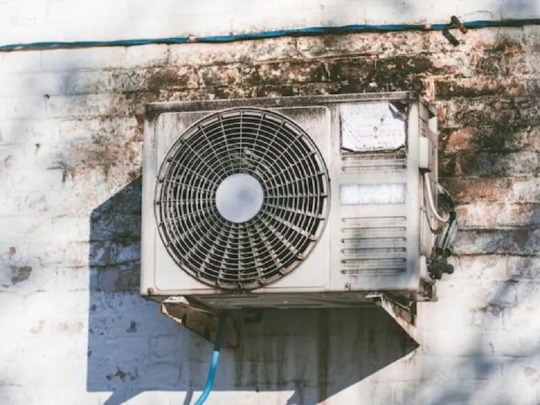
How Air Conditioners Work
Delve into the fundamental mechanisms of air conditioning systems, emphasizing their reliance on temperature differentials to regulate indoor climate.
Relationship Between Outside Temperature and Air Conditioner Efficiency
Exploration of how the ambient temperature directly impacts an air conditioner's ability to cool indoor spaces efficiently.
Impact of High Outside Temperatures on Air Conditioner Performance
Detailed explanation of how soaring external temperatures can strain air conditioners, affecting their cooling capacity and overall efficiency.
Effects of Low Outside Temperatures on Air Conditioners
Insight into how lower external temperatures might influence air conditioner performance, including potential issues like system freezing and reduced efficiency.
Efficient Temperature Range for Air Conditioners
Identification of the ideal temperature range within which air conditioners operate optimally, balancing comfort and efficiency.
Factors Influencing Air Conditioner Efficiency
Highlighting various factors beyond temperature that can affect an air conditioner's effectiveness, such as system size, insulation, and maintenance.
Importance of Maintenance in Extreme Temperatures
Emphasizing the significance of regular maintenance, especially during extreme temperatures, to ensure peak performance and longevity of air conditioning units.
Tips for Optimizing Air Conditioner Efficiency in Different Temperatures
Practical suggestions and techniques to optimize air conditioner performance based on varying external temperatures.
Energy Consumption and Outside Temperature
Analyzing the correlation between energy consumption of air conditioners and fluctuating outside temperatures.
Environmental Impact
Discussing the environmental implications associated with air conditioner usage in relation to outside temperatures.
Conclusion
Summarize the vital relationship between outside temperatures and air conditioner efficiency, reiterating the importance of understanding and maintaining systems accordingly.
1 note
·
View note
Text
Essential Inspections to Complete Before Installing Your HVAC System
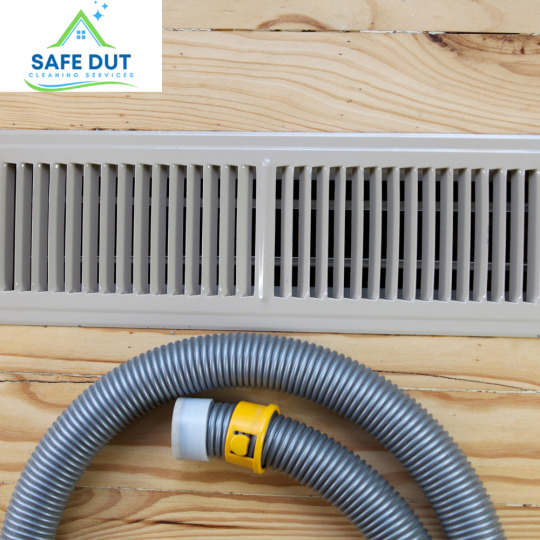
A successful HVAC installation begins long before the equipment arrives. Preparing your home by thoroughly inspecting critical components ensures your system operates efficiently and effectively from the start. Taking the time to address these areas minimizes potential issues and lays the groundwork for long-term comfort and energy savings.
Evaluate the Condition of Your Ductwork The ductwork in your home is the primary channel for air distribution, making its condition vital to HVAC performance. Before installation, inspect for any leaks, blockages, or structural damage that could hinder airflow. A professional air duct cleaning can remove accumulated dust, debris, and allergens, ensuring clean air flows effortlessly. Addressing these concerns in advance reduces strain on your system and helps maintain optimal indoor air quality.
Inspect and Upgrade Insulation Insulation plays a pivotal role in maintaining your home’s temperature and reducing energy waste. Poorly insulated spaces can lead to significant energy loss, forcing your HVAC system to work harder than necessary. Check areas such as the attic, walls, and windows for insufficient or damaged insulation. Making necessary upgrades ensures your new system delivers consistent performance and maximizes energy efficiency.
Ensure Proper Ventilation Adequate ventilation is key to a healthy and efficient HVAC system. Blocked vents or improper airflow pathways can reduce performance and compromise air quality. Verify that all vents are unobstructed and pathways are clear to promote seamless airflow throughout your home. Scheduling air duct cleaning also improves ventilation while removing airborne pollutants that could affect your indoor environment.
Assess Your Electrical System’s Readiness HVAC systems demand significant electrical power, so it’s essential to confirm your home’s wiring and electrical panel can handle the load. An outdated or overloaded system could pose safety risks and impair your new HVAC system’s performance. Consult with a licensed electrician or HVAC technician to ensure your electrical components meet modern safety standards and are equipped for seamless installation.
Lay the Groundwork for Long-Term Efficiency and Comfort By addressing these essential areas—ductwork, insulation, ventilation, and electrical systems—you set the stage for a successful HVAC installation. These preparatory steps not only enhance the performance of your system but also contribute to improved indoor air quality, energy efficiency, and lasting comfort in your home. Taking the time to inspect and optimize these components ensures your HVAC system will operate smoothly for years to come.
#HVAC installation#air duct cleaning#ventilation preparation#energy efficiency#home insulation#HVAC maintenance#indoor air quality#system performance optimization
0 notes